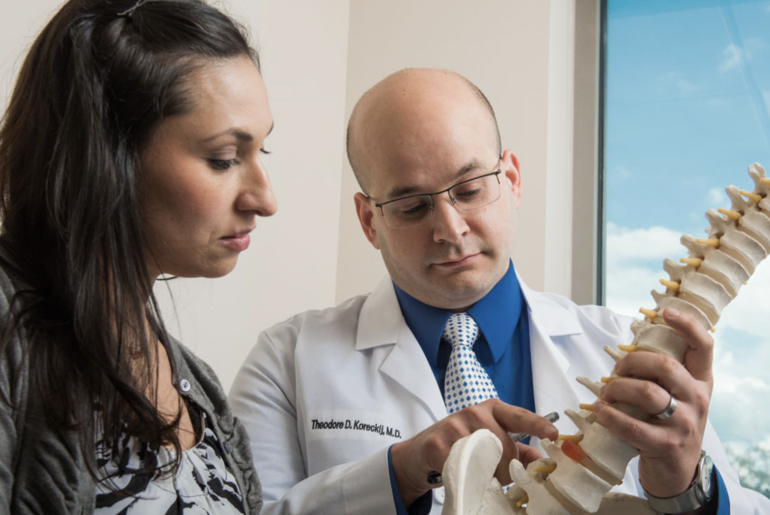Spondylolysis is a fairly common condition that affects around 4% of people. This condition involves the fracture or stress fracture of the pars interarticularis, a section of bone that encases part of the spinal cord as it exits from the brainstem. In most cases, this injury occurs during adolescence and is believed to be due to a minor trauma that creates a small fracture in the bone. This fracture typically heals with no complications but, over time, may progress into a stress fracture and become symptomatic due to repetitive micro-fractures or general stress on the spine. The injury generally affects individuals under 20 years old and is often seen in athletes. In this article, we look at some of the most common symptoms of spondylolysis that may need you to see a Shrewsbury Spondylosis specialist for diagnosis and treatment.
Lower Back Pain
The most common symptom of spondylolysis is lower back pain. This pain can range from a dull and nagging ache to sharp and sudden attacks that impact everyday activities. The pain may be worse during certain bending, stooping, or swaying motions. Prolonged sitting or standing may exacerbate the symptoms and complete loss of function.
Leg pain
Some individuals may also find that their legs ache or feel weak. Due to the position of the fracture, the nutrition that the leg muscles receive is cut off from certain vessels by the fracture site. This condition can be treated medically with anti-inflammatory medication, physical therapy, and exercises to strengthen the surrounding muscles.
Lower Extremity Weakness (LEW) and Sciatica
In severe cases of spondylolysis, the pain and pressure on the spinal cord may also lead to weakness or numbness in the legs. This condition is known as lumbar spinal stenosis and tends to affect older patients with a history of degenerative spinal conditions. In some cases, the fracture may extend into the vertebra itself and put direct pressure on the spinal cord leading to a condition known as sciatica.
Fixation
In cases where spondylolysis has been left untreated for an extended period, it can cause a fixation to the lower spine. Fixation is due to a lack of movement and may lead to pain and stiffness in moving the hips, shoulders, or legs. In these cases, surgical intervention such as vertebral body fusion (osteotomy) or even spinal cord decompression surgery such as laminectomy is required by an experienced Spondylosis specialist.
Muscle Spasms
Due to the fracture restricting blood supply to the surrounding muscles, some patients may complain that their leg or back muscles are subject to painful spasms. These can be due to muscular tears or even contractures that shorten and tighten the muscles of the lower extremities, making it difficult for them to function correctly. It is important to note that spondylolysis is not typically associated with neurological symptoms such as muscle weakness or lower extremity numbness in most patients.
In summary, spondylolysis is a condition that affects the spine and is typically seen in younger patients. It is due to a fracture of the pars interarticularis, resulting in lower back pain, leg pain, weakness, numbness, and even bowel or bladder function issues.

